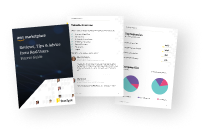
Overview
Support applications spanning multiple infrastructures and clouds outside of the EMEA regions.
Red Hat® OpenShift® Platform Plus builds on the capabilities of enterprise Kubernetes platform Red Hat OpenShift with advanced multicluster security features, day-2 management capabilities, integrated data management, and a global container registry to protect, manage, and provide security for applications in a consistent way throughout the software life cycle across clusters. It includes multicluster Kubernetes management, security with DevSecOps capabilities to protect the software supply chain, infrastructure, and workloads; and a central and scalable container registry.
Includes:
Red Hat OpenShift Container Platform: An enterprise Kubernetes container platform with automated operations to manage applications across the hybrid cloud, multi-cloud, and edge deployments. Red Hat Advanced Cluster Management for Kubernetes: Application life-cycle management and policy management across multiple Kubernetes clusters. Red Hat Advanced Cluster Security for Kubernetes: Kubernetes-native security that provides governance, security, and compliance through the entire application life cycle. Red Hat Quay: A scalable, private, and secure central registry to provide enterprise capabilities compared to standard or public registries. Red Hat OpenShift Data Foundation, offers instant access to file, block, and object data services for all workloads and delivers smart functionalities for object data. (Essentials edition is included at no additional cost with OpenShift Platform Plus)
IMPORTANT: This listing is not meant for direct consumption by deploying a single virtual machine. Please follow the instructions in https://access.redhat.com/articles/6675791 and DO NOT create a VM from this offering directly.
Highlights
- Monitor running workloads for security issues or threats with system-level data collection and analysis as well as more than 60 security policies that can be applied and enforced throughout the entire application life cycle.
- Apply consistent operational policies for security, configuration, compliance, and governance to Red Hat OpenShift clusters across on-premise and cloud infrastructures.
- Apply a DevSecOps approach by integrating declarative security into developer tooling and workflows. Use Kubernetes-native controls to mitigate threats and enforce security policies that minimize operational risk to your applications.
Details



Unlock automation with AI agent solutions

Features and programs
Buyer guide

Financing for AWS Marketplace purchases

Pricing
- ...
Dimension | Cost/hour |
|---|---|
m5.large Recommended | $0.408 |
r5.large | $0.408 |
r5ad.16xlarge | $13.062 |
r5.8xlarge | $6.531 |
p3.8xlarge | $6.531 |
m6i.32xlarge | $26.125 |
x2iedn.32xlarge | $26.125 |
r3.xlarge | $0.816 |
r5.24xlarge | $19.594 |
r5d.xlarge | $0.816 |
Vendor refund policy
All fees are non-refundable
How can we make this page better?

Legal
Vendor terms and conditions
Content disclaimer
Delivery details
64-bit (x86) Amazon Machine Image (AMI)
Amazon Machine Image (AMI)
An AMI is a virtual image that provides the information required to launch an instance. Amazon EC2 (Elastic Compute Cloud) instances are virtual servers on which you can run your applications and workloads, offering varying combinations of CPU, memory, storage, and networking resources. You can launch as many instances from as many different AMIs as you need.
Additional details
Usage instructions
IMPORTANT: This marketplace listing is not meant for direct consumption by deploying a single virtual machine. Please follow the instructions in https://access.redhat.com/articles/6675791 . DO NOT create a Virtual Machine from this offering directly.
Resources
Support
Vendor support
This offering comes with a Red Hat Premium support subscription. To learn more about this support coverage and SLAs, please consult the OpenShift Enterprise Support Policy . To activate Red Hat support for your subscription you must click the link below where you will be redirected to the Red Hat console. Once your support account is activated you will receive a confirmation email from Red Hat. Upon receipt of this email you will have access to all the benefits of Red Hat support including the following: - Access to extensive open-source software repositories in a variety of packaging formats. - Access to the Red Hat community of experts including world-class support engineers, asynchronous support ticketing, knowledgebase articles, and how-to guides. - Operational guidance and automation with advanced analytics and monitoring tools, patching, upgrades, and remediation services.To enable Red Hat Support for this subscription and for all of your Red Hat on AWS Marketplace purchases, follow the instructions at https://aws.amazon.com/marketplace/pp/prodview-fyphbrmils4dg . Get answers quickly by opening a support case with us at
AWS infrastructure support
AWS Support is a one-on-one, fast-response support channel that is staffed 24x7x365 with experienced and technical support engineers. The service helps customers of all sizes and technical abilities to successfully utilize the products and features provided by Amazon Web Services.



Standard contract
Customer reviews
Has supported container-based service hosting while slower support impacts resolution time
What is our primary use case?
Red Hat OpenShift is used to host all services running on containers on specific ports for both production and non-production environments.
Red Hat OpenShift is utilized in the healthcare sector.
What is most valuable?
Red Hat OpenShift provides good value as a cloud service, comparable to other public clouds such as AWS and Azure , but it functions as a private cloud rather than a public one.
A smaller cloud running on containers enables easy deployment with the ability to scale up and scale down, and it can host multiple services on the same platform.
What needs improvement?
Red Hat OpenShift is currently running with VMware, and there are some issues on the storage side that are still being addressed.
The support from Red Hat is rated around a six or seven in those kinds of cases.
Support could improve with faster response times, as responses are currently quite slow.
For how long have I used the solution?
The team has been working with Red Hat OpenShift for over five years.
How was the initial setup?
The initial setup for Red Hat OpenShift is easy to deploy.
What about the implementation team?
There are approximately two resources working on the Red Hat OpenShift cluster for deployment.
The DevOps engineer and the Red Hat OpenShift Linux engineer are the job roles required for deployment.
What's my experience with pricing, setup cost, and licensing?
There is no free open-source version available; a license must be purchased for Red Hat OpenShift.
The pricing for Red Hat OpenShift is considered quite high.
Which other solutions did I evaluate?
Red Hat OpenShift cannot be compared with other options for PaaS clouds because other private services have never been used.
There is no current knowledge of other available options.
What other advice do I have?
I am not familiar with the mobile app platform for Android.
I don't have experience with VMware or AWS products at this time, although a team member may be working on the technical side.
My focus is on the management side rather than the technical side.
Microsoft tools are not being used.
The team is focused on the Linux side for the private cloud for Red Hat OpenShift.
I have minimal familiarity with Red Hat OpenShift. I don't have experience with Red Hat OpenShift Data Foundation. The technical side of Red Hat OpenShift is handled by a team member. Management tools, help desk software, or ITSMs are not being used. The overall review rating for Red Hat OpenShift is seven out of ten.